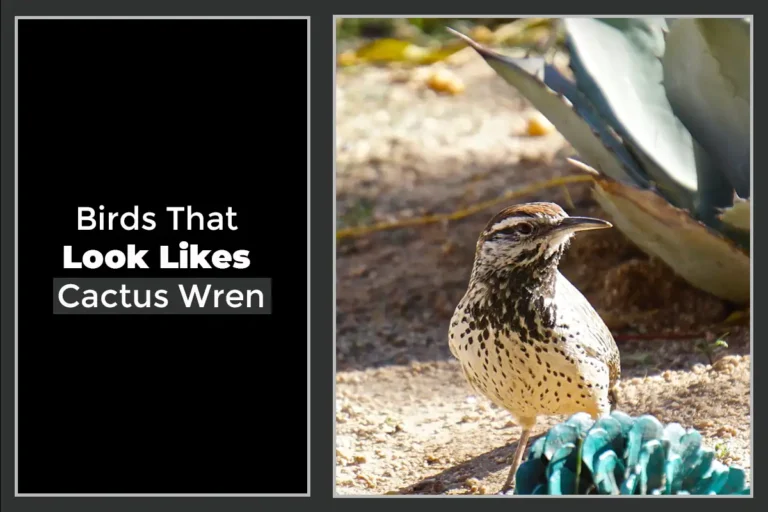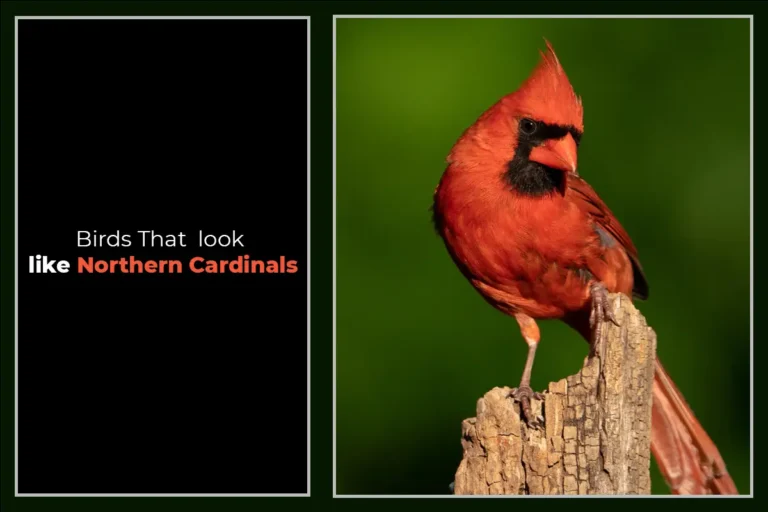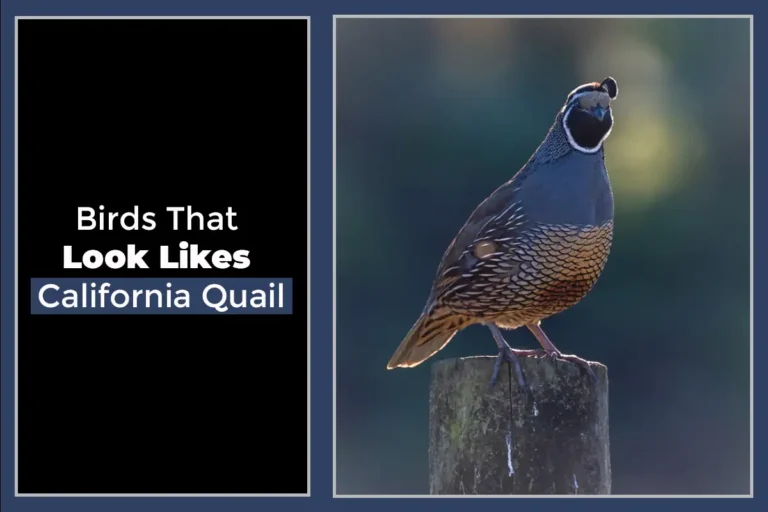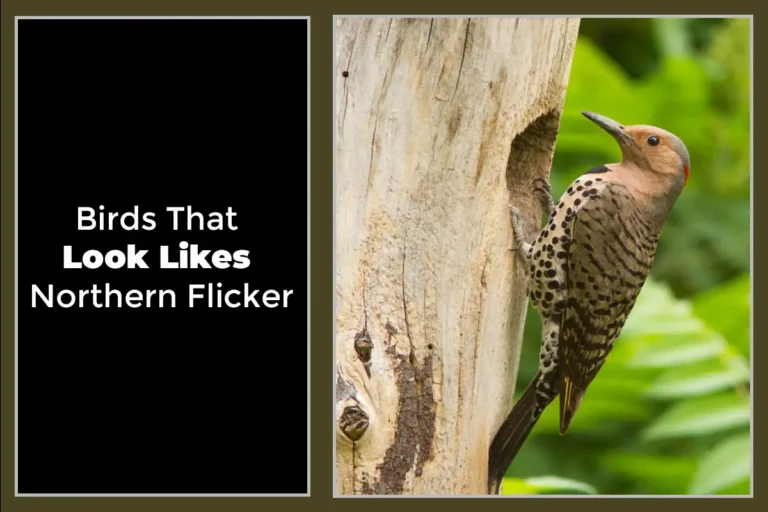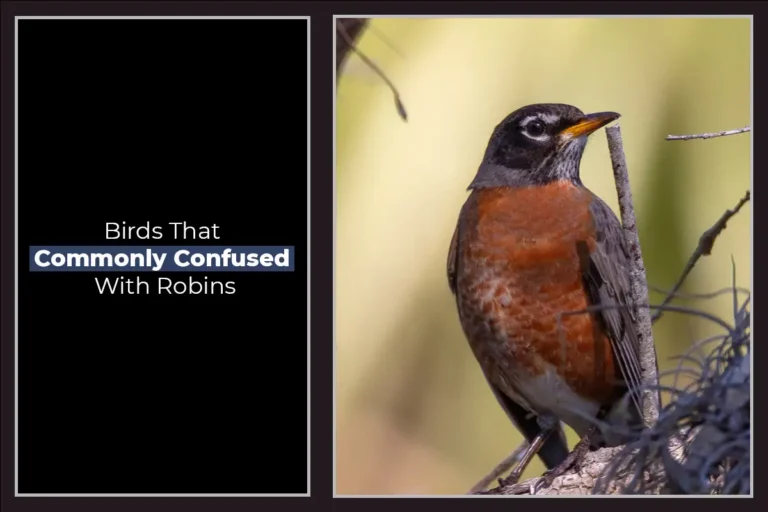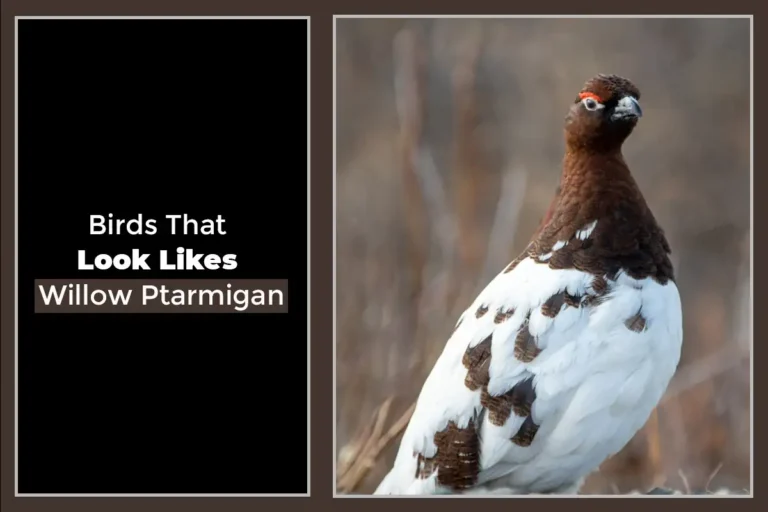10 Birds That Look Like Eastern Bluebirds
You spot a flash of blue and orange hopping along the ground and fly up to get a closer look. “Ah, the Eastern Bluebird!” At least, that’s what you think. But wait – take another glance. You realize it’s not an Eastern Bluebird at all!
Several birds closely resemble Eastern Bluebirds thanks to their vibrant shades of blue. Among the most confusing are Western and Mountain Bluebirds, Blue Buntings like the Indigo Bunting and Lazuli Bunting, relatives in the Jay family such as the California Scrub-Jay, and even little songbirds like Blue Grosbeaks.
So how do you identify that bird correctly? Read on to learn how to differentiate these blue birds that often get jumbled up with Eastern Bluebirds! We’ll give you tips on their noticeable traits so you can identify them. Let’s take a closer look!
True Bluebirds: Western and Mountain Bluebirds
Let’s kick things off with the bluebirds that look most similar to our Eastern Bluebird friends – the Western Bluebird and Mountain Bluebird.
You’ll commonly mix up these two with Eastern Bluebirds thanks to their matching shades of blue and orange.
01. Western Bluebird
Found out west as you may have guessed, the aptly named Western Bluebird shares much of the same blue and rusty orange coloring as the Eastern Bluebird.

Male Western Bluebirds sport all-blue heads, backs, wings, and tails, with a grey belly and bright orange-red throat and breast. Females and juveniles are greyish overall with some blue highlights.
So, what sets them apart from Eastern Bluebirds?
- Western Bluebird males have deeper, more vibrant orange-red on their throats and chests compared to the paler, peachy orange of Eastern Bluebirds.
- Their blue color extends down their throats and neck, unlike Eastern Bluebirds whose orange throat stands out from the blue head.
- Female Western Bluebirds have greyer undersides compared to the white bellies of female Eastern Bluebirds.
Beyond color differences, Western Bluebirds tend to perch higher up with more frequency than Eastern Bluebirds, who prefer low branches close to the ground.
And despite overlapping ranges, Western Bluebirds generally stick to the western half of North America year-round while Eastern Bluebirds roam the east.
02. Mountain Bluebird
Meanwhile, the Mountain Bluebird lives up to its moniker by hanging out in western mountain ranges and high-elevation terrain during breeding season. But come winter, they descend to lower elevations and often cross paths with the other bluebirds.
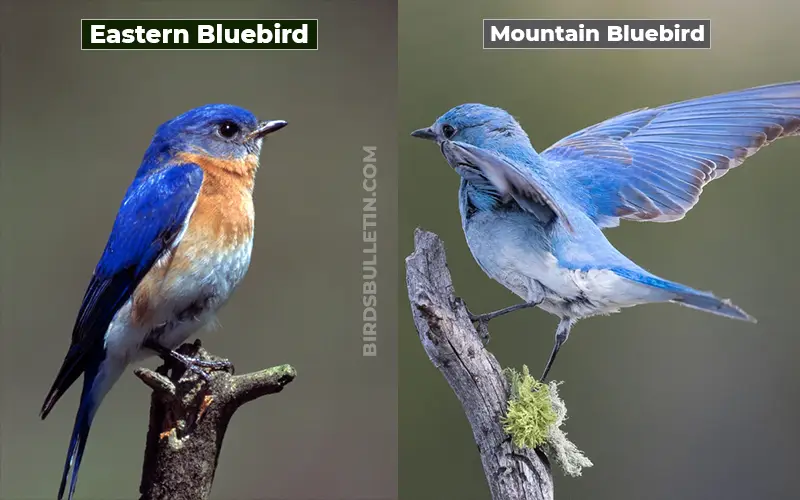
The Mountain Bluebird male sports a pale sky-blue coat from head to toe. While they lack the orange throat and chest of other bluebirds, their white bellies still stand out. Females are mostly greyish-brown with hints of blue on the wings and tail.
Compared to Eastern Bluebirds, Mountain Bluebirds have:
- An all-blue body lacking the rusty orange breast
- Paler and brighter blue plumage
- A slightly thinner bill
Beyond physical differences, Mountain Bluebirds stick to wide open spaces like mountain meadows and grasslands whereas Eastern Bluebirds live in more forested areas.
Pro tip: if you spot one in the western mountains in summer changing to gray and white come winter, it’s certainly a Mountain Bluebird.
Blue Buntings: Indigo and Lazuli
Moving along to small songbirds of the bunting family, the aptly named Indigo Bunting and Lazuli Bunting bear an uncanny resemblance to Eastern Bluebirds thanks to their brilliant blue hues. A closer look reveals noticeable differences in size, shape, and markings.
03. Indigo Bunting
No bird lives up to its name quite like the stunning Indigo Bunting. Males boast deep, shimmering indigo feathers from head to toe, earning them the nickname “blue canary.” But that rich blue tone differs from the royal blue shades of Eastern Bluebirds.
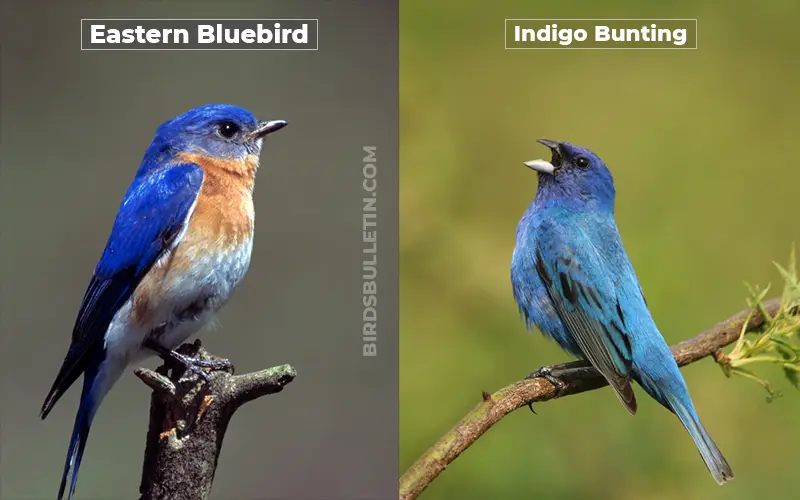
Plus, Indigo Buntings lack the rusty orange throat and chest that typically stands out against the blue plumage of Eastern Bluebirds.
Beyond color, you can distinguish Indigo Buntings from Eastern Bluebirds by:
- Size – At just 4-5 inches long, Indigo Buntings are tiny compared to the 7-inch length of Eastern Bluebirds
- Shape – Indigo Buntings have plump, finch-like bodies and conical beaks unlike the sleek, rounded thrush shape of bluebirds
- Markings – Their dark wings lack the neat, thin black lines along the edges found on Eastern Bluebirds
Since Indigo Buntings stick to brushy areas and woodland edges in summer while Eastern Bluebirds roam open fields and sparse woods, habitat can also help properly ID them.
04. Lazuli Bunting
Out West, the Lazuli Bunting fills a niche similar to Indigo Buntings in eastern states. Male Lazuli have vibrant blue heads, white bellies, and rusty orange chests. So, at first glance, they strongly resemble Eastern Bluebirds!
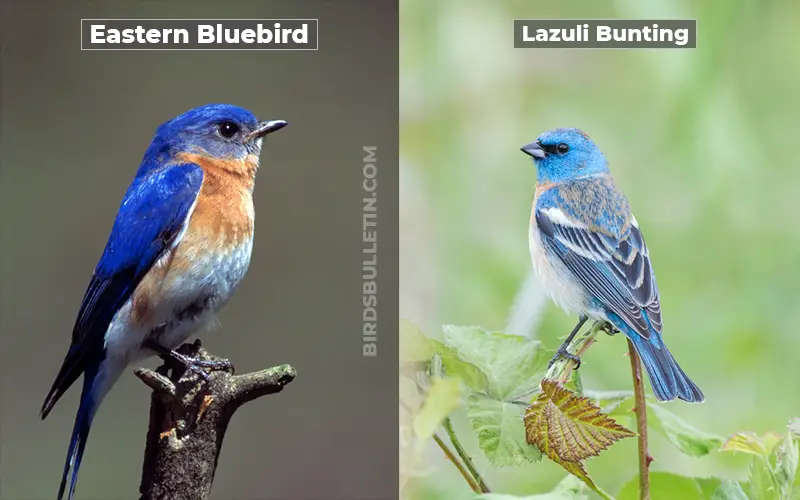
But differences lie in the details:
- Blue color – Lazuli have brighter, more electric blue tones on their heads than Eastern Bluebirds
- Wing markings – Lazuli’s wings have prominent white bars contrasting black tips not seen in Eastern Bluebirds
- Bill shape – Lazuli’s feature the typical conical bunting bill vs the slender bill of thrushes like the bluebird
Since Lazuli Buntings predominantly live along the western edge of North America, the range can also help distinguish them from the eastern-dwelling Eastern Bluebird.
Blue Jays: Western Scrub-Jay and California Scrub-Jay
Now we come to jays and their close cousins – a group of savvy birds who add a splash of blue to the landscapes out West. Specifically, the Western Scrub-Jay and California Scrub Jay bear more than a passing resemblance to our Eastern Bluebird friends. But they have enough distinct traits once you know what to look for.
05. Western Scrub-Jay
With soft blue and grey feathers, the slender Western scrub jay shares the Eastern Bluebird’s blue-backed appearance.
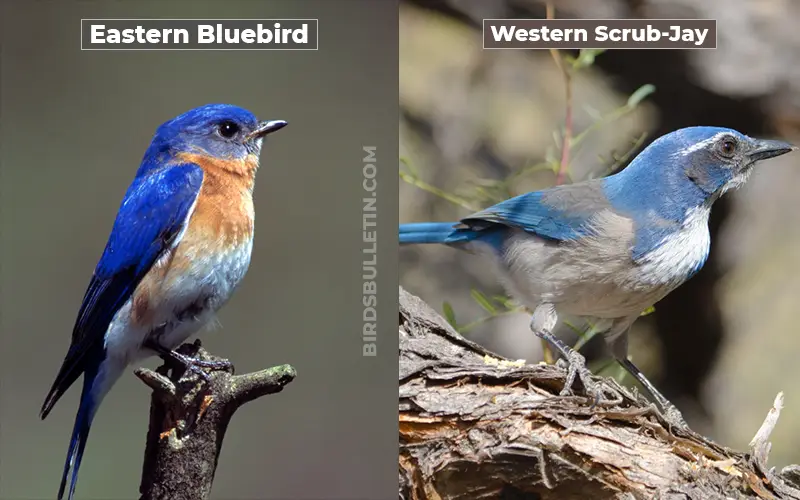
However, Western Scrub-Jays lack any rusty orange tones and instead have pale grey underbellies and throats. Plus, they have a bold white eyebrow stripe that Eastern Bluebirds lack.
Other telling differences include:
- Size – At 12 inches long, Western scrub jays nearly double the size of Eastern Bluebirds
- Shape – Long tails and slender heads shape Western scrub jays unlike plumper, rounder bluebirds
- Behavior – Scrub jays hop along the ground more often than tree-perching bluebirds
Since Western scrub jays mainly occupy the western half of North America, location can also assist in proper identification.
06. California Scrub-Jay
The California Scrub-Jay rivals its Western cousin in resemblance to the Eastern Bluebird. Adults sport deep blue wings, tails, backs, and heads with paler grey bellies and throats. But they have even more pronounced white eyebrows and throats than Western Scrub-Jays.

To correctly ID a California Scrub Jay:
- Look for their black bib-like band across the chest – a mark no bluebird displays
- Note the bright white under-tail coverts visible when they fly
- Observe their jerky, hops vs the smooth gait of bluebirds on open ground
As their name denotes, California scrub jays live along the Pacific Coast and rarely overlap with the range of Eastern Bluebirds. So, habitat and geography can complement visual cues to properly identify these tricky jay lookalikes.
Other Blue-Colored Birds: Cerulean Warblers, Blue Grosbeaks and Blue-gray Gnatcatchers
Beyond close bluebird relatives and jays, a handful of petite blue-toned birds also bear similarities to Eastern Bluebirds at first glance. But their distinguishing traits help set them apart.
07. Cerulean Warbler
Male Cerulean Warblers sport regal blue plumage on their small frames, broken up by black streaks on their backs. White undersides and dark black-and-white wings complete their look.
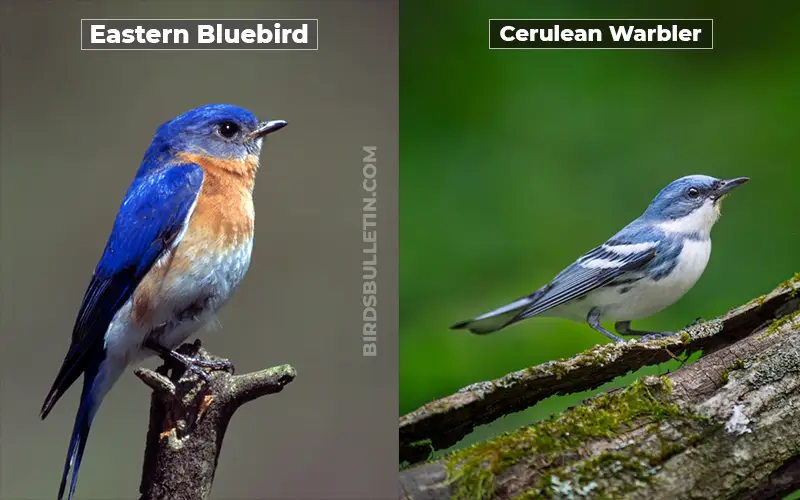
Compared to an Eastern Bluebird, a Cerulean Warbler’s blue tone has more of a greenish hue. Plus, a warbler’s tiny 4-inch size, thin pointed bill, lack of orange, and loud high-pitched song differentiates it.
To ID a Cerulean Warbler, look for:
- Small size and lean shape
- Greenish-blue upper back unlike the pure blue tones of bluebirds
- Thin white wing bars contrasting broader black-and-white bluebird wings
- A high canopy perch far from a bluebird’s low tree limbs
Since Cerulean Warblers summer breed in eastern deciduous forests before migrating south, habitat preferences also don’t overlap much with open country-dwelling bluebirds.
08. Blue Grosbeak
The eye-catching Blue Grosbeak delivers sky-blue hues across its entire body, unlike the orange accents of Eastern Bluebirds. Up close, its huge silver bill gives away its identity compared to a bluebird’s petite black beak.
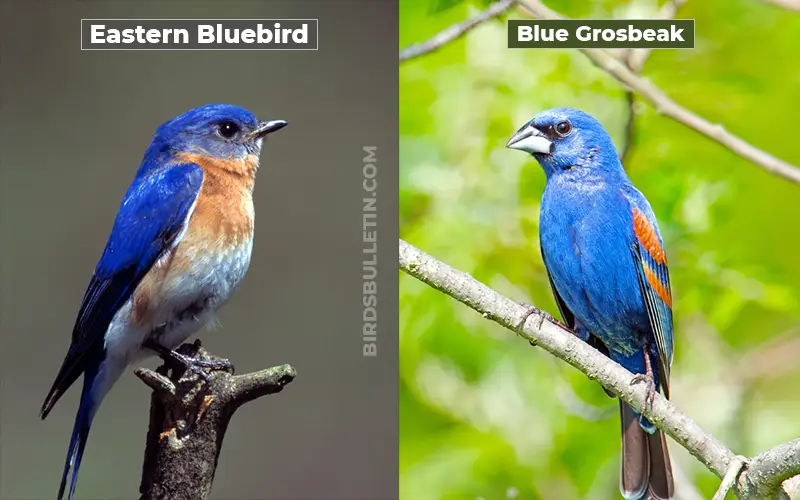
Other distinguishing marks include:
- Larger size than a bluebird
- Black face mask and rusty wing bars bluebirds lack
- It forages on the ground more than tree perching
09. Blue-gray Gnatcatcher
Lastly, the delicate Blue-gray Gnatcatcher lives up to its name with its soft blue-tinged gray feathers with white undersides. Its tiny size, round shape, white eye ring, black tail markings, and constant flitting distinguish it from bluebirds.
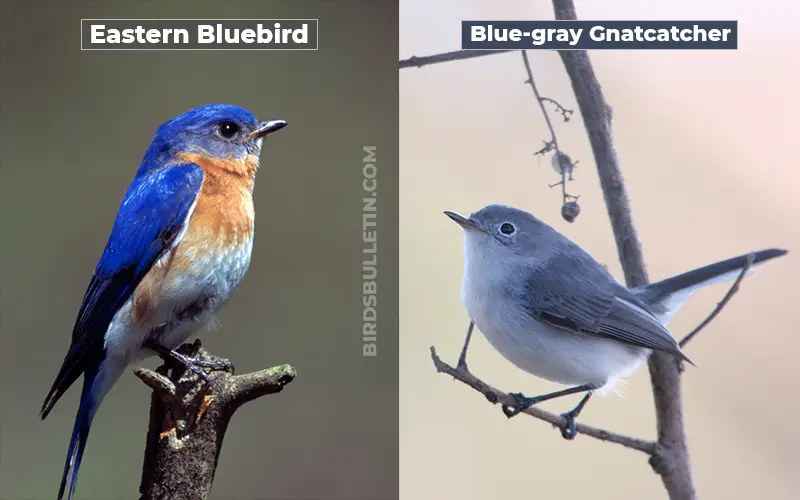
Key traits that set Blue-gray Gnatcatchers apart comprise:
- Very small size – just 4 inches long!
- The rounded shape and short tail unlike sleek bluebirds
- Dark tail with white outer edges unlike solid bluebird tails
- Actively flitting through trees vs perching
Comparison Chart
To help summarize key traits of birds that often get mixed up with Eastern Bluebirds, here’s a handy dandy comparison chart. We’ve selected standout features that differ across species spanning color patterns, size, shape, and behavior.
| Bird Species | Size | Color Pattern | Location |
|---|---|---|---|
| Eastern Bluebird | 7 inches | Blue upper parts, orange throat/chest | East/Midwest |
| Western Bluebird | 7 inches | The more vibrant orange throat | West |
| Mountain Bluebird | 7 inches | Evenly pale blue | West mountains |
| Indigo Bunting | 4-5 inches | Smaller, conical bill | East/Southeast |
| Lazuli Bunting | 4-5 inches | Brighter blue, white wing bars | West |
| California Scrub-Jay | 11 inches | Black chest bib, white eyebrows | Southwest/West Coast |
| Cerulean Warbler | 4 inches | Greener blue, black streaks | East Deciduous Forests |
| Blue Grosbeak | 8 inches | Black face, large silver bill | South-Central US |
Parting Thoughts
What a whirlwind tour through the sneaky blue doppelgangers of our beloved Eastern Bluebird! We covered how to distinguish their western cousins, the vibrant bunting twins, Savvy scrub jays of the west, and little blue songbirds.
I hope breaking down standout field marks, preferred habitats, behaviors, sizes, and geographic ranges helps you confidently ID that flash of blue crossing your path. No more mix-ups between Eastern Bluebirds and tricky lookalikes! Happy birding!


